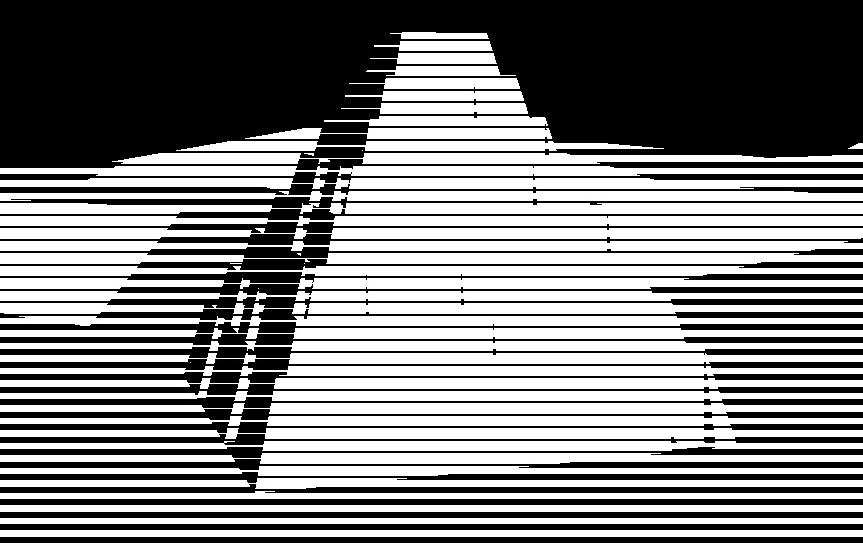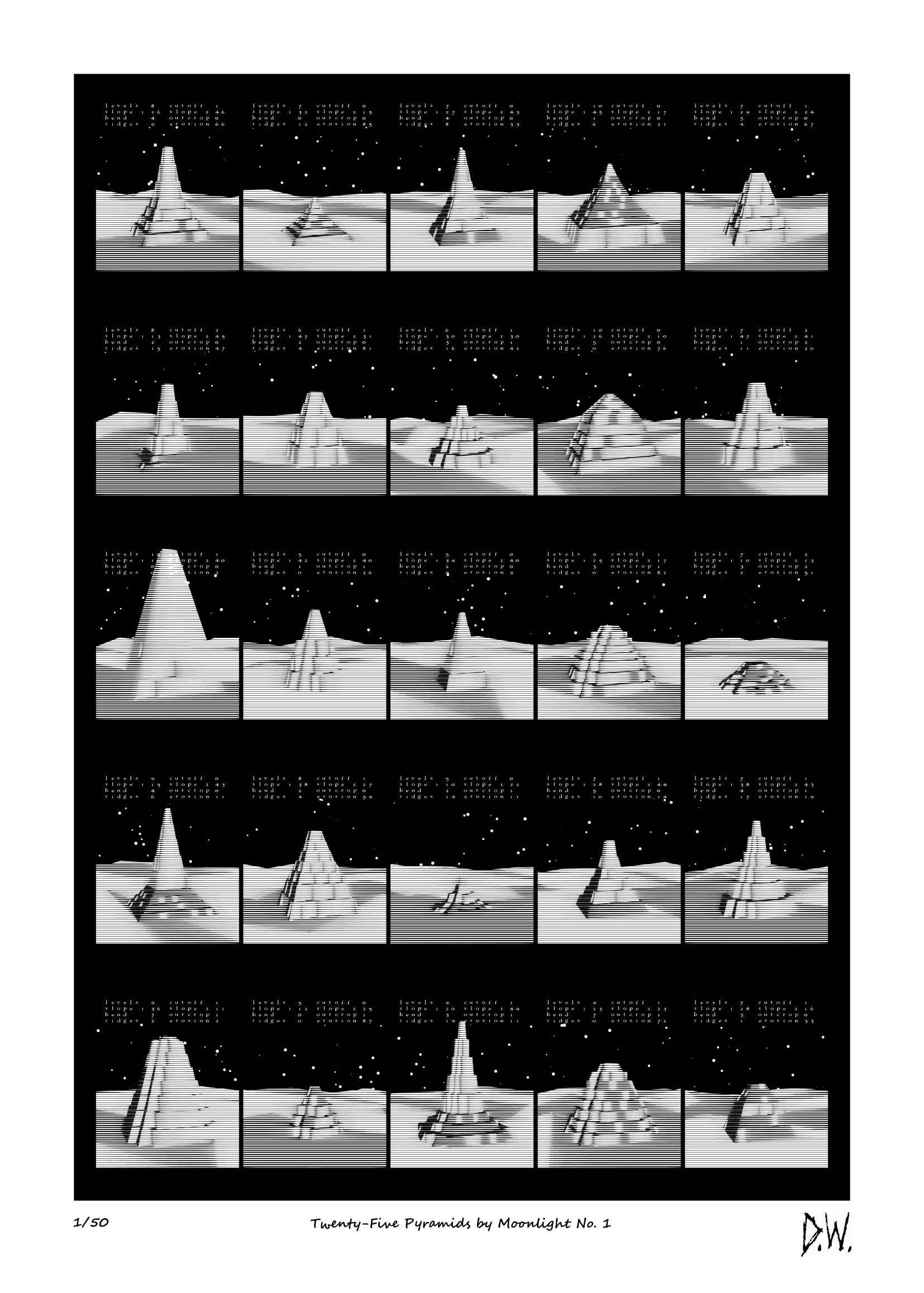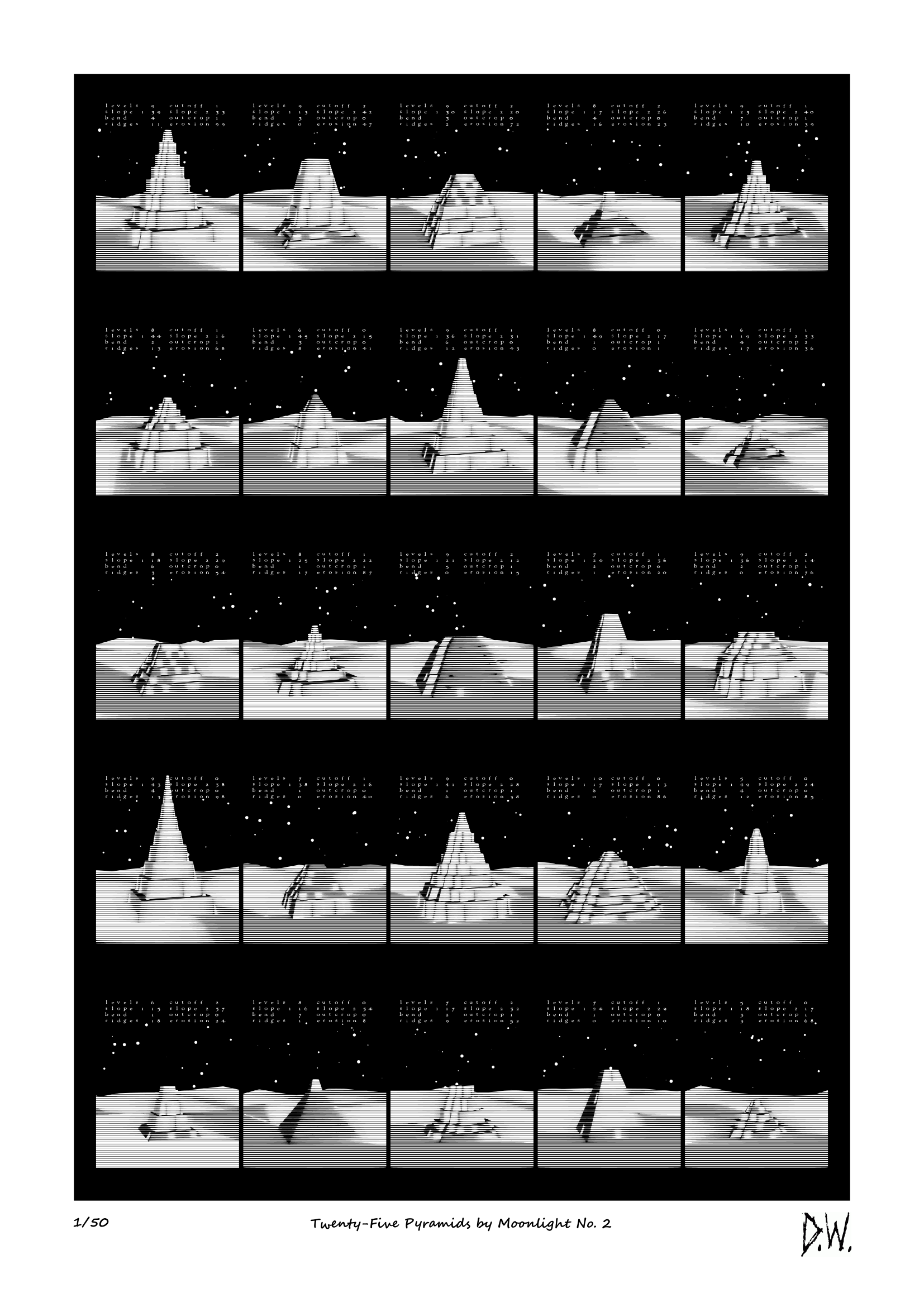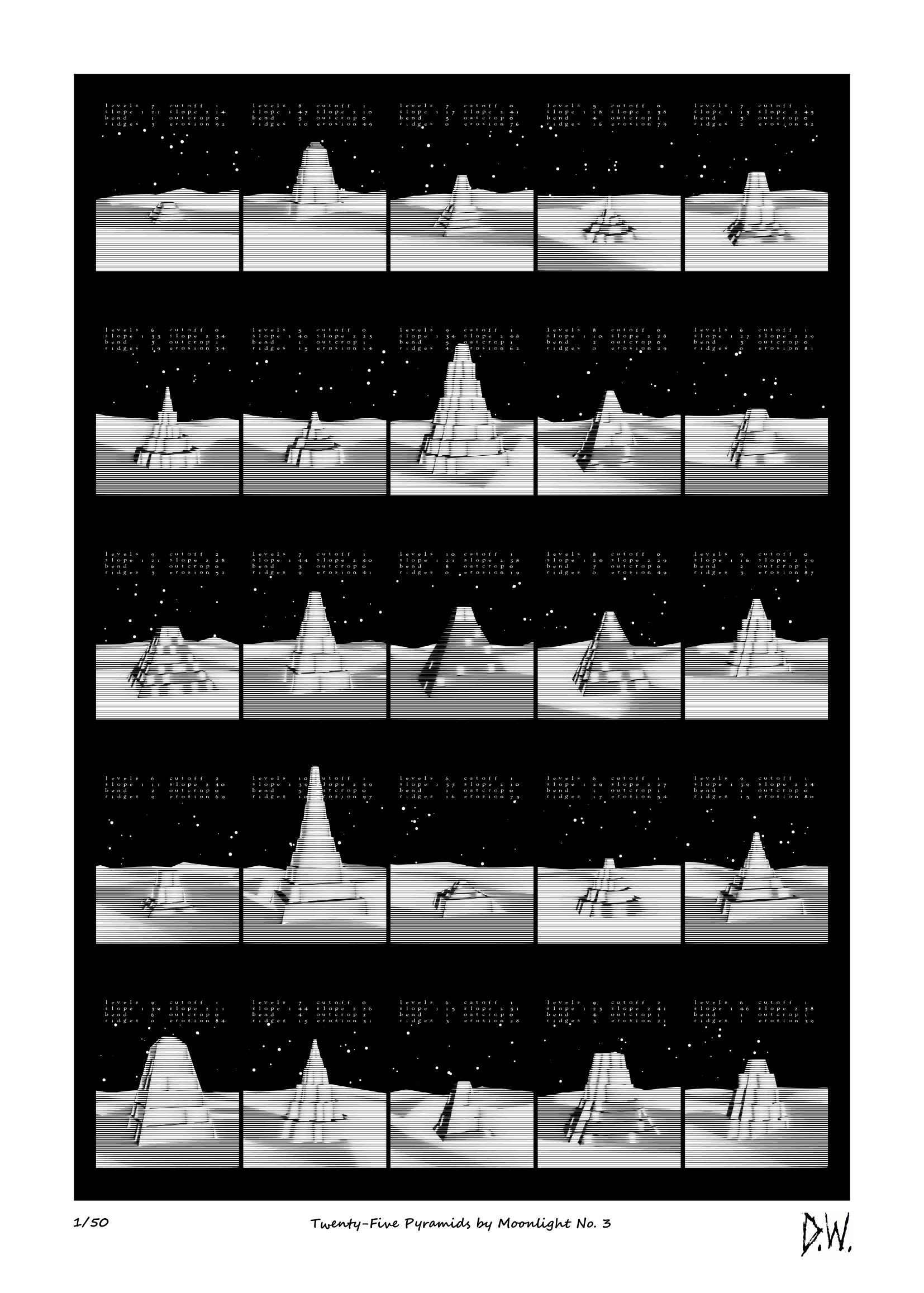
Detail from Twenty-Five Pyramids by Moonlight #1, D.W. '23
Twenty-Five Pyramids by Moonlight
Algorithmic Cultural Chimaeras
I was thinking about the desert the other day. Vast, ever-shifting dunes under a starry sky. To grasp the serenity of that experience, one seems to need a funnel, an object like the egyptian pyramids. Its formula of a quadratic base converging to a point above also encodes narratives of cultural otherness.
With my own take on that formula, I have rendered a series of stark copperplate posters with endless permutations of that archetypal scene.
I print out each pyramid's parameters (levels, slope, erosion etc.) right among the stars above, showing the ancient connection between algorithmic architecture and celestial mechanics. Looking at the unordered, artlessly repeating plates, I think Plato is right: the essence of the pyramid never gets across.
That is a good thing. The pure geometry shifts chimerically from one culture to another, from stupas to ziggurats1. What remains is the moonlight and the clean desert air.

Digital Print | D.W. '23
Twenty-Five Pyramids by Moonlight No. 1
60 × 80 cm (≈ 23,6 × 31,4 in)
Zoom In

Digital Print | D.W. '23
Twenty-Five Pyramids by Moonlight No. 2
60 × 80 cm (≈ 23,6 × 31,4 in)
Zoom In

Digital Print | D.W. '23
Twenty-Five Pyramids by Moonlight No. 3
60 × 80 cm (≈ 23,6 × 31,4 in)
Zoom In

Digital Print | D.W. '23
Twenty-Five Pyramids by Moonlight No. 4
60 × 80 cm (≈ 23,6 × 31,4 in)
Zoom In
Footnotes
- 1↑ Stupas are Buddhist Pyramids. Ziggurats are Babylonian pyramids with many terraces. I was surprised how many forms of pyramids there are. For example, the algorithm also renders a truncated pyramid like the one in Bodhgaya.
